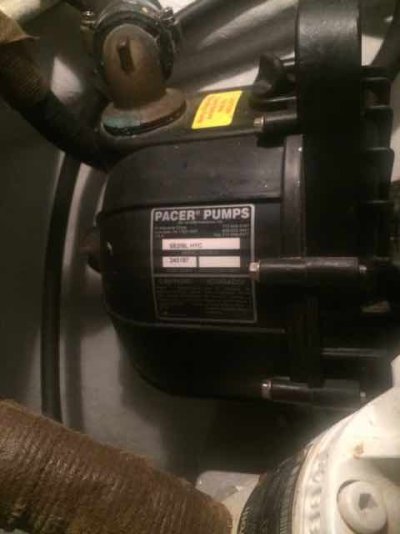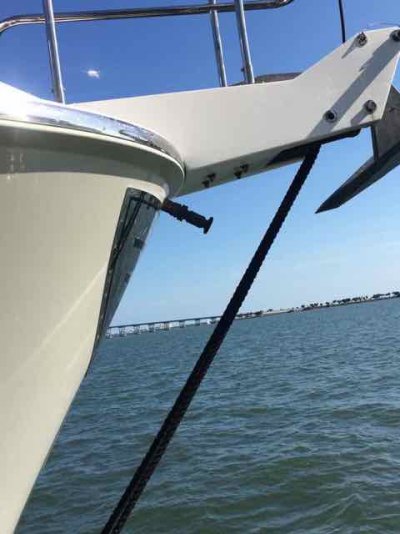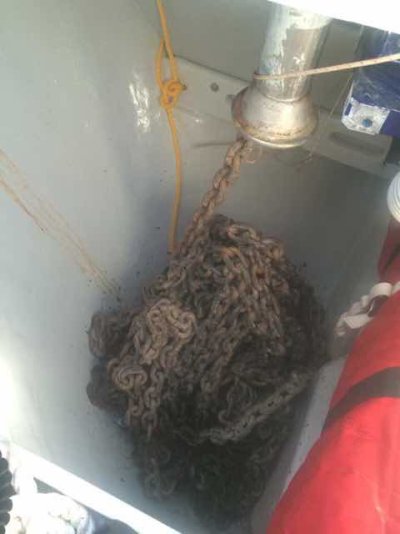angus99
Guru
Let's see if there's any more consensus on this than there is on anchors. 
Currently, we have freshwater at the bow and transom, powered by a fairly anemic Shurflo that also runs the household FW system. While water capacity isn't a primary worry (tanks hold about 350 gallons), it sounds like I'll be using the anchor washdown a lot on the Chesapeake.
Option A: I've been thinking about installing a dedicated ninja of a washdown pump and maybe rigging it with a Y valve to draw from either the tanks or a seacock, which would allow me to keep one faucet/valve in the bow area.
Option B: I could install a completely independent saltwater line--seacock/pump/spigot--and retain the freshwater outlet. One of us would blast the mud off with saltwater while the other rinses the chain with fresh before it goes down into the locker. I'm guessing here that a freshwater rinse after knocking mud off with saltwater might be better for the chain and maybe produce less odor?
Option C?: How would you set up your ideal 12-volt system?
Currently, we have freshwater at the bow and transom, powered by a fairly anemic Shurflo that also runs the household FW system. While water capacity isn't a primary worry (tanks hold about 350 gallons), it sounds like I'll be using the anchor washdown a lot on the Chesapeake.
Option A: I've been thinking about installing a dedicated ninja of a washdown pump and maybe rigging it with a Y valve to draw from either the tanks or a seacock, which would allow me to keep one faucet/valve in the bow area.
Option B: I could install a completely independent saltwater line--seacock/pump/spigot--and retain the freshwater outlet. One of us would blast the mud off with saltwater while the other rinses the chain with fresh before it goes down into the locker. I'm guessing here that a freshwater rinse after knocking mud off with saltwater might be better for the chain and maybe produce less odor?
Option C?: How would you set up your ideal 12-volt system?






